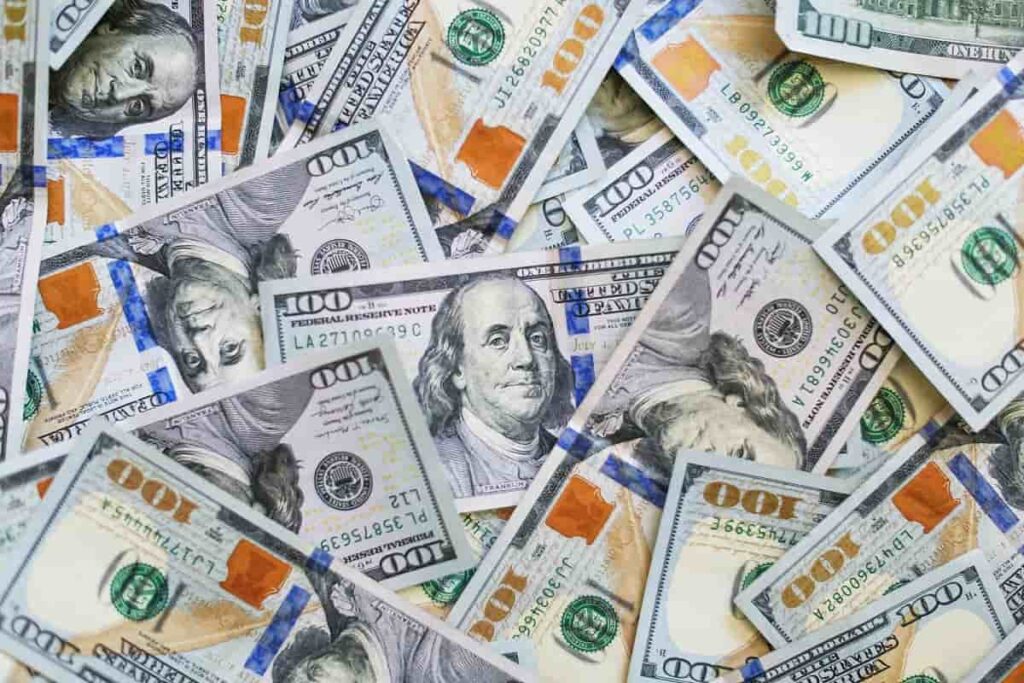Is SoFi Stock a Ticking Time Bomb? Hard to Tell.
Table of contents

We’ve been called the best-kept secret in finance, yet that hardly seems the case based on how many emails we receive each day. People from all walks of life feel the need to reach out with some of the inanest rubbish you could dream up. But not all these emails are pointless. Some really hit the mark, like this one from Rambo Zhu of China EMI Shielding Materials who has conductive fabric samples for anyone who needs them for testing:

If anyone is in the market for some quality shielding fabric, Rambo here is your go-to girl. And now, we return you to your regularly scheduled programming.
Back From Commercial Break
A certain percentage of the content we produce is driven by demand from our readers which typically mirrors demand from people who don’t know about the world’s best-kept secret in finance. One name that keeps coming up over and over is SoFi (SoFi), so let’s crack open that walnut. A cursory look at the latest SoFi 10-Q shows such a convoluted business that we can simply conclude the following: we’d be more likely to buy a pallet of EMI shielding fabric from Rambo than we would buy shares of SoFi.
About SoFi Stock
Founded in 2011, San Francisco’s own SoFi Technologies took in $3 billion in funding before deciding to go public using a special purpose acquisition company (SPAC). The value proposition is a $2 trillion opportunity focused on capturing the lucrative HENWS niche – High Earners Not Well Served.

In a blog post, SoFi talks about a similar term – HENRY – which stands for High Earners Not Rich Yet. They define HENRYs as belonging to one of two groups:
- Millennials (born between 1980 and 2000) who make between $100,000 and $200,000 per year
- Families that make $250,000 to $500,000 per year (roughly).
For retail investors, the roller coaster ride that followed SoFi’s SPAC can partially be attributed to the Reddit types getting ahold of it. InvestorPlace called SoFi, “one of those companies that are being treated like a meme stock even though the business is doing pretty well,” while Marketplace declared earlier this year, “SoFi joins the meme-stock party.” This just means a great deal more price volatility, not to mention cheerleaders who pound down the door when anyone critiques their scared cow. What most won’t think about doing is taking a good look under the 10-Q kimono. And the trepidation is understandable, because what you’ll find is a convoluted mess.
An Opaque Hedging Strategy
Forget about trying to understand SoFi based on traditional methods of valuing tech stocks because this $5.5 billion hybrid fintech conglomeration does things differently, starting with the $6.9 billion in derivatives contracts they’re using to hedge interest rates with. That number represents the notional value of these options. For example, the notional value of interest rate swaps is used to come up with the amount of interest due that a counterparty could assume. Of that $6.9 billion, nearly $4.9 billion represents interest rate swaps “utilized to manage interest rate risk associated with certain of our securitization investments.” That means SoFi is subject to counterparty risk, which means that the firm taking the other side of that option may not be able to pay the piper if a black swan event happens. Trying to gauge the risks for SoFi using a sensitivity model would be next to impossible because it’s so complex.
Will History Repeat Itself?
The amount of debt held by SoFi is also $4.9 billion which consists of many moving parts that include borrowing money, loaning it to students, then packaging up those loans in a process known as securitization. Anyone remember what happened the last time securitization was used to package debt and sell it off to firms in complex instruments nobody could understand? That’s right little Johnny, the 2007-2008 Financial Crisis:
Securitization, specifically the packaging of mortgage debt into bond-like financial instruments, was a key driver of the 2007-08 global financial crisis.
Credit: Investopedia
We want nothing to do with this, but it may soon be a non-issue. There’s every sign that growth of SoFi’s student loan segment will continue to stall while they hand out risky unsecured personal loans instead. No student will privatize their loan with SoFi if it means they can’t take advantage of free handouts ponied up for political points. We also need to consider the demand side. Since SoFi makes money packaging student loans and selling them, what happens when the institutional buyers of those securitization products no longer want to purchase them? There are too many things that can go wrong, not to mention the 500-lb (227 kilo) bald eagle in the room
Forgive Me Uncle Joe
Word on the streets is that President Biden’s administration plans to forgive student loan debt. Some might argue this simply requires the gainfully employed to subsidize irresponsible decision-makers who took out loans that they’re unable to pay because they chose to major in underwater basket weaving. For the 49% of our readers who live outside the U.S., we can’t explain the rationale to you other than to say it’s an attempt to garner future votes at the expense of the American taxpayer while encouraging financial irresponsibility. We find it odd that SoFi’s CEO thinks this is a good idea when his company states the following:
Should there be further student loan relief measures, we expect that this would decrease the demand for our student loan refinancing products and would likely have an adverse impact on our results of operations and overall business.
SoFi 10-Q
How can a firm make that statement when their CEO authored a blog post in March 2022 with the below request:
It’s time to lead from the front based on economic data and social principles – not politics – and end the confusion by giving distressed and defaulted borrowers the permanent relief they need, including $10,000 in student loan forgiveness, tailoring the moratorium for those in severe hardship, and putting the affluent and capable back into repayment on May 2, 2022 as planned.
Anthony Noto, CEO of SoFi
Who knows, but this just means more regulatory risk that needs to be considered.
Our Take on SoFi
We’ve read plenty about the “SoFi is a fintech that’s upending consumer finance” bull thesis. Yes, we know about their banking license, but we’re having a hard time reconciling the risk vs. potential reward. The company talks about a $2 trillion opportunity, but we’re seeing a firm that presents a great deal of risk, much of which is external. Just look at how many parties are critical to the success of SoFi and could easily make things go pear-shaped if a black swan event happens.
- Consumers – the people that SoFi lends money to
- Institutional buyers – the people who buy the loan bundles from SoFi
- Institutional lenders – firms that loan money to SoFi so they can lend it to consumers
- Counterparties – firms that take the other side of SoFi’s $4.9 billion worth of interest rate swaps
- Government – an entity that can have an adverse impact on SoFi with an unknown likelihood
- Reddit meme stonk types – cheerleaders who increase volatility by behaving irrationally
For a firm that talks about helping its member achieve financial independence, it’s surprising to see cryptocurrencies being offered on their platform and members being enticed to invest in them with financial rewards.

Just how many of SoFi’s HENRYS are dabbling in these risky products? The company says they’ll start to disclose that later this year as they’ll be required to by the SEC.
We’ve specifically avoided companies like Upstart (down 82% since we warned investors) because of their exposure to the American consumer. We also avoid companies that say one thing and do another, like Robbin-the-hood.
Robinhood and SoFi – A Match Made in Hell
Some pundits believe that Robinhood and SoFi would be a match made in heaven, and these firms do share something in common. Both say one thing and then do something entirely different. Readers will recall our piece on Robinhood which chastised their claim of “democratizing access to wealth” while selling – mostly newbie investors – risky financial options and cryptocurrencies. Some of that same hypocrisy is on display with SoFi, a firm that talks about helping their “members” achieve financial independence while at the same time extending them $23,000 personal loans with interest rates ranging from 5.74% – 21.78%. For what exactly? The reason why you’re a “high earner not yet rich” is because you do stupid stuff like taking out a $23,000 personal loan when you make $100,000 to $200,000 a year. So why do personal loans represent the fastest category of loan growth for SoFi with year-over-year growth of 151%?

These aren’t cheap loans either. The average weighted interest rate charged by SoFi on personal loans is 11.02%, up from 10.85% last year. The higher the interest rate, the less likely the loan gets paid back. Around 2/3 of the U.S. population now lives paycheck-to-paycheck, and inflation isn’t making it easier to make those loan payments.
Let’s hope SoFi makes their members prove they bring in the income they say they do. If that selection process isn’t strict and rigid, they’re not actually attracting the HENRYs they want. Instead, they’re attracting the type of people who take out personal loans and start racking up credit card debt simply because someone lets them. That’s a story that never ends well.
In looking at the average FICO score across each loan category, Student Loans improved slightly while Home Loans fell 11 points. Not surprisingly, Personal Loans fell the most, a drop of 16 points.

The lower the FICO score, the less likely the person on the other side will give you back all the money you’re owed. And who knows how many wannabe Gordon Gecko types out there used their loan proceeds to speculate on the fracturing crypto market.
If SoFi wants to help members achieve financial independence, maybe they should emphasize that hard-working people get rich over time only if they spend less than they make. Living below your means is the only way to “achieve financial independence.” Whenever you’re spending, you’re losing money you could be saving. That aside, SoFi is an increasingly complex entity that might find value as an educational tool for bee school students who have a free semester to spend trying to figure out how all the moving parts are related and model the complex risks this stock has to offer.
Conclusion
SoFi has promised a great deal of growth, and they’ll be tempted – like all consumer-facing finance firms inevitably do – to start laxing constraints to increase growth. The average FICO scores in their loan portfolios are good metrics to watch. Are the people using SoFi’s platform of the quality that SoFi says? We don’t think the customer profile they’re painting is one we want to bet on.
You’d have an easier time finding an Eastern European taxi driver who carries change than you would a rich person who pays interest on loans they don’t need. Rich people don’t take out personal lines of credit, and they don’t think speculating on crypto is the path towards a better zip code. That’s like Rambo thinking a monster sale is around the corner if she can just send out several million more emails to random people.
Sign up to our newsletter to get more of our great research delivered straight to your inbox!
Nanalyze Weekly includes useful insights written by our team of underpaid MBAs, research on new disruptive technology stocks flying under the radar, and summaries of our recent research. Always 100% free.















Are you sure Rambo is a woman ? I always thought Rambo is a male name ..
It’s actually poking fun at the fact that all Western names used in China have a 50/50 chance of representing a male or female. And any word is fair game. There was once an office in Hong Kong with two girls – Lettuce and Coffee – who both loved their hand-picked names. When Coffee was asked if her choice of names represented her love of coffee, her response was no. In fact, she didn’t even drink coffee. Coffee liked tea, and she loved the sound of the word “coffee.” A most endearing culture.
SOFI +12.5% yesterday after Q4 results ..
Current share price: $6.68 (at the time of article it was $7.23), market cap: $5.3B, annualized P/S=2.9.
MF: “SoFi reported fourth-quarter revenue of $457 million, which was up 60% from the year-ago quarter. The company did continue to lose money, but losses of $40 million were 64% smaller than in the fourth quarter of 2021. Moreover, on an adjusted basis, pre-tax operating earnings soared to $70 million, up from $4.6 million year over year.”
The company sees itself making money by the fourth quarter of this year ..
We might do an update on this complicated firm which enjoys immense popularity amongst those who like investing without understanding the complexities of the underlying company.